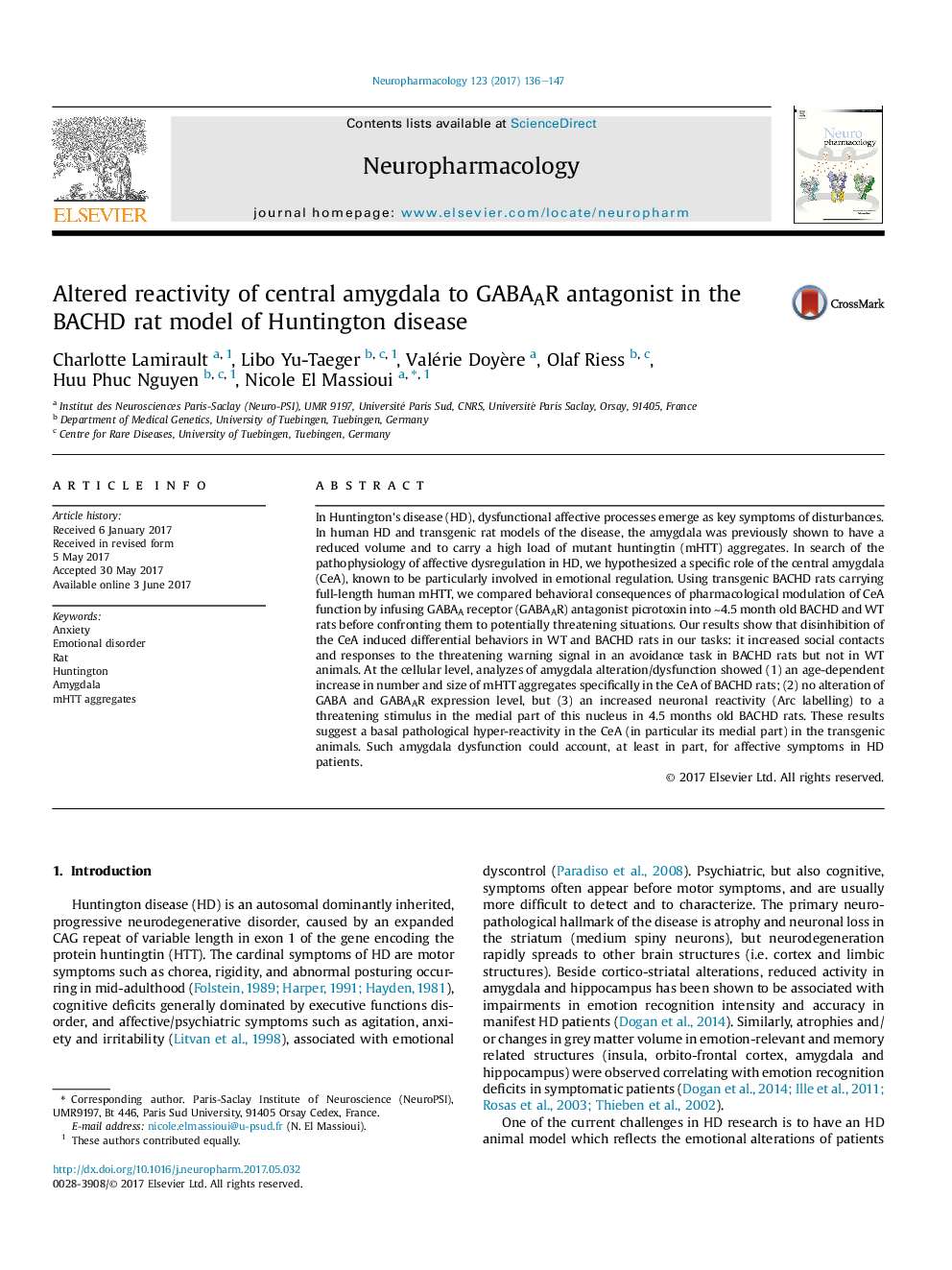| Article ID | Journal | Published Year | Pages | File Type |
|---|---|---|---|---|
| 5548765 | Neuropharmacology | 2017 | 12 Pages |
â¢GABAAR modulation of CeA alters behavior to potentially threatening situations in BACHD rats.â¢High rate of mHTT aggregates in the CeA of 5/6 months old BACHD rats.â¢Normal GABAAR expression level in the CeA of BACHD rats.â¢Increased neuronal reactivity of CeA to a threatening situation in BACHD rats.
In Huntington's disease (HD), dysfunctional affective processes emerge as key symptoms of disturbances. In human HD and transgenic rat models of the disease, the amygdala was previously shown to have a reduced volume and to carry a high load of mutant huntingtin (mHTT) aggregates. In search of the pathophysiology of affective dysregulation in HD, we hypothesized a specific role of the central amygdala (CeA), known to be particularly involved in emotional regulation. Using transgenic BACHD rats carrying full-length human mHTT, we compared behavioral consequences of pharmacological modulation of CeA function by infusing GABAA receptor (GABAAR) antagonist picrotoxin into â¼4.5 month old BACHD and WT rats before confronting them to potentially threatening situations. Our results show that disinhibition of the CeA induced differential behaviors in WT and BACHD rats in our tasks: it increased social contacts and responses to the threatening warning signal in an avoidance task in BACHD rats but not in WT animals. At the cellular level, analyzes of amygdala alteration/dysfunction showed (1) an age-dependent increase in number and size of mHTT aggregates specifically in the CeA of BACHD rats; (2) no alteration of GABA and GABAAR expression level, but (3) an increased neuronal reactivity (Arc labelling) to a threatening stimulus in the medial part of this nucleus in 4.5 months old BACHD rats. These results suggest a basal pathological hyper-reactivity in the CeA (in particular its medial part) in the transgenic animals. Such amygdala dysfunction could account, at least in part, for affective symptoms in HD patients.
